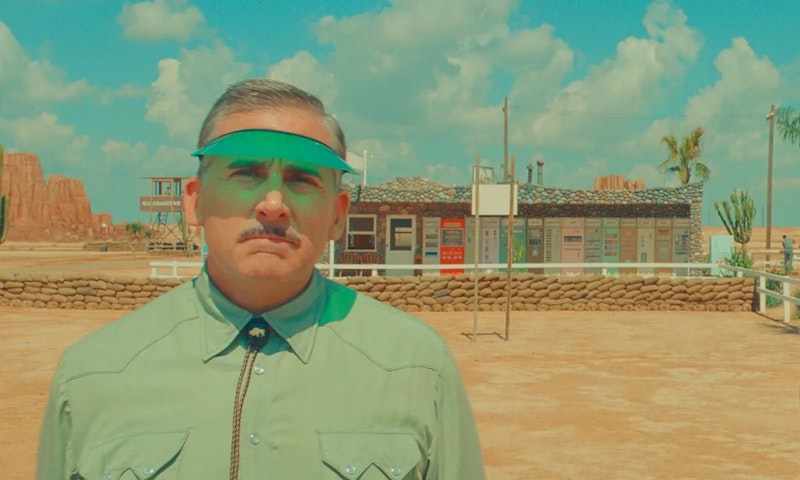The combination of Wes Anderson’s style and vision and the iconography of 1950s Americana is such a perfect fit that it's surprising that they've never come together before. They do, beautifully, in Asteroid City, in which Anderson brings his aesthetic, and much of his usual company of actors, to the American West, circa 1955, although the film was shot in Spain.
Asteroid City is set in the fictional small Western town of the title, one famous for the past crash of a possibly alien meteorite. There, a group of characters have gathered for what's known as a Junior Stargazers astronomy convention. Jason Schwartzman, in the Anderson tradition of grieving widowers, plays a man bringing his four kids to the convention shortly after the death of his wife, while Tom Hanks, in his Anderson debut, plays Schwartzman’s late wife's father. Hanks, sporting a wispy mustache, seems to be playing the usual Bill Murray, sad-older-man role, but Murray was set for a different part, and had to drop out due to a Covid bout; Steve Carell replaced him. Scarlett Johansson is a troubled film actress who engages with Schwartzman through their adjacent windows, hinting at a possible love affair.
The Asteroid City scenes are bookended by a framing device in which they're actually a televised play, with Bryan Cranston as the Rod Sterling-like narrator, Edward Norton as the director, and Adrien Brody as the playwright; within, there’s some fun backstage intrigue. Those scenes are in the Academy ratio, while the Asteroid City scenes are in Cinemascope, in a rare modern example of a film switching between aspect ratios and having the gambit work.
The cast is divided between veterans of Anderson's films (Schwartzman, Norton, Brody, Jeff Goldblum, Jeffrey Wright, Tilda Swinton, Liev Schreiber, Willem Dafoe, Rupert Friend, Bob Balaban, Tony Revolori and Stephen Park), and some newer faces (Hanks, Johansson, Cranston, Carell, Maya Hawke, Matt Dillon, Margot Robbie, and several talented child actors.) There’s some dumb discourse lately about Anderson, whether it's people erroneously believing his films all look the same, or claiming they lack emotional resonance. More recently, there’s been a lot of AI-generated content featuring, say, the Succession characters in the style of Anderson, as though that somehow invalidates his talent as a filmmaker.
That's always been wrong. While Anderson's has his visual signatures, his dominant color palettes differ from movie to movie—with lots of red in Rushmore, pink in The Royal Tenenbaums, blue in The Life Aquatic with Steve Zissou, etc. The desert scenes, at least in the film-within-the-play, are dominated by a clear blue sky, juxtaposed against sand on the ground. Anderson's work, the new film included, offers more emotional punch than his critics often give him credit for. See, for example, an outstanding late scene between Schwartzman and Robbie.
The music is first-rate, whether using pop songs or the score by the director's usual collaborator Alexandre Desplat. There's more than enough to do to keep this massive cast busy, and Jeff Goldblum's brief appearance is especially a delight. Asteroid City goes in the upper half of Anderson’s filmography, if a tick below the very top.

